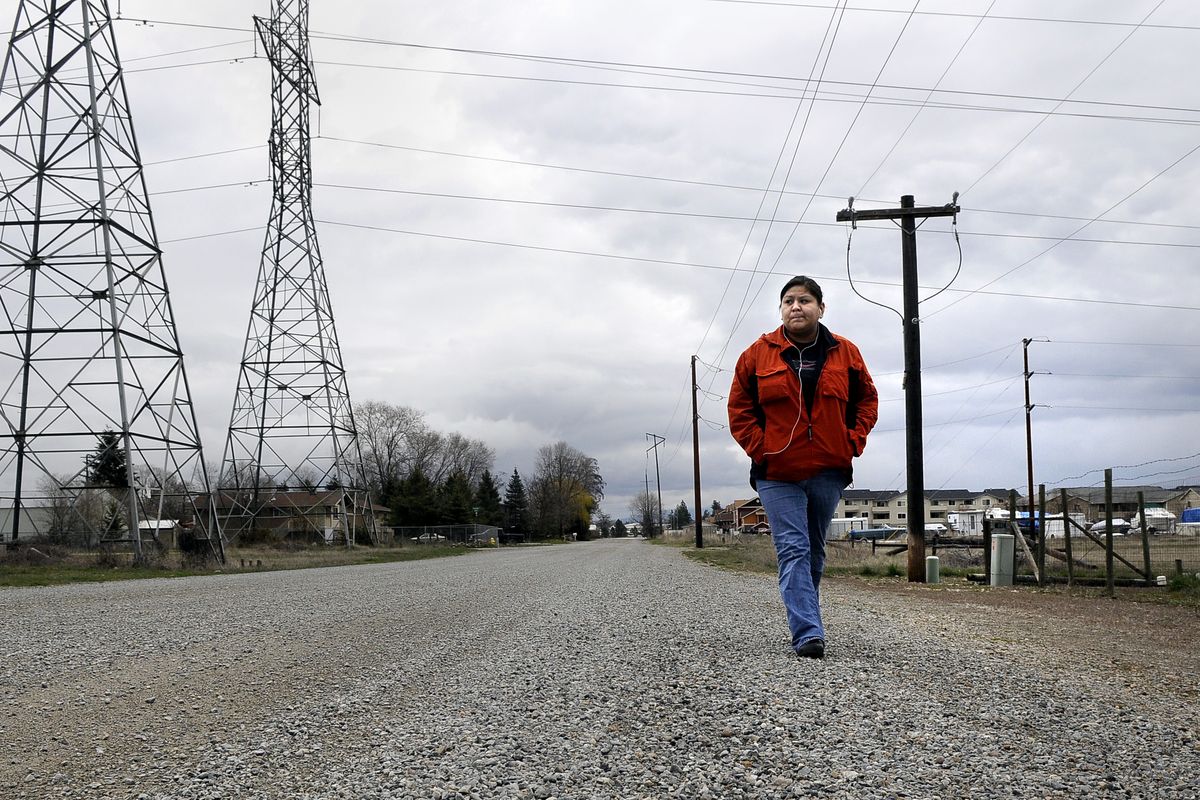Bus isn’t coming for many in Spokane area
Falling tax revenues keep STA from steering service to new business and residential developments

Sam and Mary Simmons have to walk three-quarters of a mile to catch the nearest city bus.
“It’s kind of a hassle when you have a 2-year-old and a 9-year-old,” Sam Simmons said while making the hike near Upriver Drive and Buckeye Street in northeast Spokane.
A neighbor, Cassandra Cawston, 22, has to walk the distance, too. “It would be awesome if they had a bus” serving the neighborhood, she said.
Spokane Transit Authority officials said they sympathize with the problem, but budget limitations and street deficiencies make it impossible to extend service to the area for now. Buckeye Avenue is not paved, and Upriver Drive has no room for pedestrians to wait or board buses next to the eastbound lane.
“For a bus to run on this (Buckeye), we’d beat it up pretty badly in no time,” said Karl Otterstrom, director of planning for STA.
SNAP, a nonprofit agency, developed an apartment complex several years ago in the area called Riverwalk Point to provide quality housing for homeless and low-income families. The agency was counting on getting bus service in the area, but it has been denied the service for at least five years.
Across the Spokane urban area, STA is struggling to meet demand for expanded bus service at the same time that sales tax revenues – which pay the majority of the cost of running the bus agency – have been falling.
STA tax receipts last year were down 12 percent from their peak in 2007, and continued to decline by 4.9 percent in the first quarter of the year. As a result, the bus agency is planning service cuts starting this September to maintain its budget.
Transit officials said they haven’t given up on the possibility of extending bus service along Upriver Drive to reach residents in more than 600 apartments and homes that have sprung up there in recent years.
But the inability to extend service ought to be a warning to property developers – STA is not going to be able to extend bus lines to meet the needs of individual projects. Instead, the agency said it is developing a set of planning guidelines to control where and when buses will run, and is likely to concentrate services along heavily traveled and populated routes.
Worthy Enterprises last year learned the risk of building a large office building just off an existing bus line.
When the company opened the River View Corporate Center at 16201 E. Indiana Ave., Worthy Enterprises figured it would be a simple matter to extend bus service from Sullivan Road.
Not so.
STA told Worthy executives that it would cost $250,000 a year to provide buses to the five-story, 250,000-square-foot facility east of Spokane Valley Mall. The agency declined a request to run a bus to the building, partly because Indiana is not a through street currently.
A major tenant in the building – the state of Washington – requires bus service before entering leases for its departments, in this case the Department of Health.
Jack Marr, leasing director at River View, said the solution has been to run a shuttle bus from the vicinity of the Spokane Valley Mall less than a mile to the west.
Marr said 10 to 12 employees were using the shuttle earlier this year.
For a large office property in today’s business environment, having bus service is a must, he said, expressing frustration that STA has been unable to serve the office complex.
“I don’t know what we have to do” to get bus service, he said.
Spokane Valley plans to extend Indiana Avenue further to the east and link it to other arterials north of the Spokane River. That may create an opportunity to redesign the existing bus route in the area, STA officials said.
“That area along Indiana is a future priority,” said Susan Meyer, chief executive officer at STA.
She said it’s not the first time that STA has been unable to fulfill requests by large property owners to extend bus service to their facilities.
When Huntwood Industries moved to Liberty Lake from the Spokane Industrial Park in 2005, it asked STA to extend service to the rear of its sprawling property, Meyer said. STA declined, forcing the company’s bus riders to make a long walk to the employee entrance.
“Extending service at the expense of existing service is hard to justify,” she said.
Holly Martin, community development director for SNAP, said the location for the River Walk apartments made sense because the site was large enough for 100-plus apartments and was available at a good price.
“We really thought it would not be a problem to extend bus service three-quarters of a mile,” she said.
In retrospect, Martin said, “I would have real second thoughts” about building the housing complex where it is now.
STA’s board is working on a plan to cut bus services by 2 percent this year, to be followed by cuts of 7 percent each in 2011 and 2012. This year’s cuts involve mostly reductions of route frequency or weekend service on lesser-used lines. A pair of connector lines to park-and-ride lots would be eliminated.
At the same time, the agency is working on a new comprehensive plan that pays “growing attention to the importance of linking transportation with urban development, and a projected regional population growth of more than 100,000 people,” according to the agency’s website.